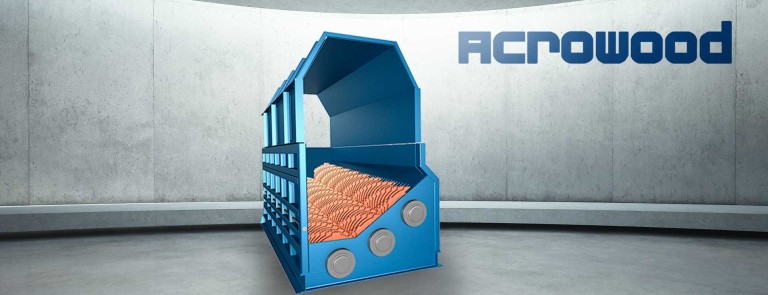A Look at Mechanisms, Performance, and Best Use Cases
In the demanding world of timber processing, removing bark efficiently and effectively from logs is a critical first step. This process, known as debarking, prepares the wood for subsequent stages like sawing, chipping, or pulping. For high-volume operations in mills and plants, heavy-duty industrial debarkers are essential machinery. While several types exist, drum debarkers and rotary debarkers are two of the most prevalent, each with distinct operating principles and ideal applications. Understanding the differences between them is key to selecting the technology best suited for specific operational needs.
The Workhorse: Understanding Drum Debarkers
Imagine a massive, rotating cylinder, often hundreds of feet long. This is the core of a drum debarker. Logs are fed into one end of the drum, which is set on an incline and rotates continuously. Inside, the logs tumble against each other and against steel plates or “rifters” lining the interior of the drum. This violent, yet controlled, chaotic motion generates significant friction – it’s essentially logs rubbing against logs and the drum walls – which serves to loosen and abrade the bark. As the bark is removed, it falls through slots or perforations in the drum shell, while the now debarked logs are discharged from the lower end.
Drum debarkers are valued for their high throughput capacity, capable of processing large volumes of logs simultaneously. They can handle a wide range of log sizes and species and are a reliable choice for operations where logs are relatively straight and unfrozen. However, their reliance primarily on log-on-log friction can make them less effective when dealing with crooked, knotty, or severely frozen wood, or species with particularly tough or stringy bark that doesn’t easily detach through tumbling alone. Drum debarkers also typically require a substantial amount of space and their mechanical nature can lead to significant noise levels and considerable wear on the drum structure, potentially resulting in higher maintenance demands over time. They may also involve wet systems, requiring management of bark fines and effluent.
The Evolution: Exploring Rotary Debarkers

Rotary debarkers, sometimes referred to as roller debarkers, represent a technological evolution in industrial debarking. Instead of a large rotating drum, this system typically employs a stationary trough or bin. Positioned along the bottom and sides of this bin are multiple rotating shafts equipped with specialized tooling, such as carbide-tipped knives or abrasive elements. Logs are fed into this bin, where the rotation of the shafts causes them to agitate, tumble, and move forward. The bark is removed through a combination of the mechanical action of the tooling directly engaging the logs and the continued log-on-log friction within the agitated mass. The detached bark falls through the gaps between the rotating shafts or through openings in the bin structure below.
One of the key advantages of rotary debarkers is their enhanced ability to handle more challenging log characteristics. The direct mechanical action of the tooling helps to aggressively remove bark from crooked or frozen logs and those with difficult bark types that might pass through a drum debarker with residual bark. This leads to a cleaner debarked log and often results in less fiber loss compared to the more abrasive tumbling action in a drum. Rotary debarkers are generally more energy-efficient, have a smaller footprint for a given capacity, and operate with lower noise levels. Their design often allows for easier maintenance access to the tooling and components.
Drum vs. Rotary: A Comparative Look
The Choice for Modern Mills: Acrowood’s Rotary Debarkers
Selecting the appropriate debarker is a critical decision based on factors such as the species and condition of the logs being processed, desired production volume, available space, and operational budget. However, for many modern mills seeking high efficiency, clean debarking of challenging wood, and lower operating costs, rotary debarkers offer compelling advantages.
When considering heavy-duty debarking equipment, particularly advanced rotary systems, look to manufacturers with a proven track record. Acrowood, with over 100 years of experience engineering robust, heavy-duty equipment for mills and plants, stands out in the industry. Proudly 100% USA-based and manufactured, Acrowood understands the rigorous demands of North American wood processing. Their continuous debarkers, a type of rotary debarker, are designed to deliver the superior performance, minimal wood loss, and reliable operation that today’s high-production facilities require. By leveraging decades of engineering expertise, Acrowood provides debarking solutions built to last and optimize yield, making their rotary debarkers a preferred choice for many operations aiming for maximum efficiency and profitability.
